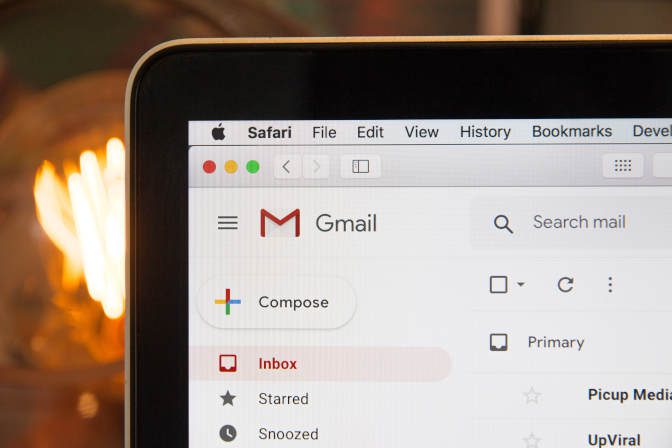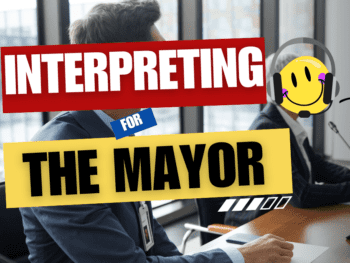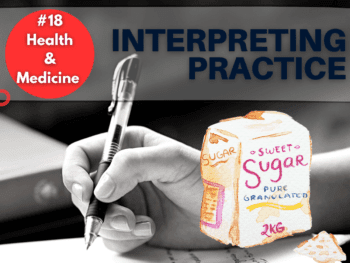How quickly should I reply to my clients’ emails? How to properly address them? These are the golden rules of email writing and how to handle a customer enquiry.
We freelancers enjoy our freedom. Most of us chose this way of making a living for that reason: the possibility of deciding when, where, with whom and at what times to work.
However, as it is well known, there are also downsides. Not only there’s always a considerable level of uncertainty – no fixed income, no paid holidays, etc. – at first there’s also a problem of experience and inside knowledge, or lack of thereof.
On a typical job, new employees receive training and guidance from a senior staff member; freelancers, on the other hand, get none of that, and often end up having to find out their industry’s best practices the hard way, i.e., by trial and error.
One of the areas in which I see newbies making mistakes all the time is client communication. Universities are not preparing their students for any of that, so when it’s time to enter the job market many have no idea how to go about.
In this blog we focus on freelance translators and interpreters, so today I’ll cover some of the best practices for email writing and how to handle customer enquiries. You may still benefit from reading this post even if your freelance activity has nothing to do with translation: some of the principals are also valid for many other business sectors.
Understanding Translation and Interpreting Requests
First, let’s briefly cover how things work in our industry. Most translators and interpreters work on a freelance basis, so we must interact with our clients in order to get work. It’s important to note that while most clients these days are translation agencies, many linguists also work for the end client directly.

If you’re totally new to the translation industry, I covered how to become a translator and how to become an interpreter on two separate posts. It may be worth having a quick look before coming back to this one.
Normally, it all starts with an interpreting or translation request. The client needs to get a task done, so they contact you in order to check your availability to assist them.
This is a key moment for the freelancer. For new linguists, being noticed by a potential client takes time and a lot of persistence; therefore, once the availability requests start arriving in your inbox, that’s your opportunity to get work.
Clients tend to have slightly different expectations depending on whether we are talking about a translation project or an interpreting assignment. Let’s have a look into this in more detail.
Translation Request
To say the world of translation is fast-paced is an understatement.
Brands always have new products to release in different markets, as well as social media campaigns, newsletters, etc; manufacturers need instruction manuals translated into several languages all the time; solicitors need certified translations for their court cases or for other purposes; and so on.
They often need things done quickly, so deadlines tend to be tight. When you are contacted for a translation project, you need to act fast. Remember: it’s a competitive, fast-paced market; if you don’t reply quickly enough, they’ll contact your colleague next door.

Virtually every bit of communication with your clients will be done via email. Very rarely you may receive the odd phone call, but emails are the norm when it comes to translation requests.
Here’s the golden rule for translators:
The best time for you to reply to a translation request is immediately.
Replying to an email enquiry within 10-15 minutes is usually fine, but 30 minutes upon receipt of the request may already be too late. If you can reply within seconds, that’s ideal.
Not every client is equally diligent when it comes to giving you information about the task they want you to perform, but in general, a well-rounded translation request should include details such as:
- Language combination
- Number of words
- Fuzziness report (if applicable; check this post on translation rates if you don’t know what this is)
- Topic / Area of expertise
- Deadline
- A sample of the source text
Whenever relevant, you may want to ask your client for a clarification should any of the above be missing from the request.
Clients expect translators to respond to new enquiries within a very short time frame because, in theory, translators are always working on their computers and should have their email inbox accessible at all times.
Interpreting Services
When it comes to interpreting services, customers tend to be more tolerant in relation to how quickly they expect an answer from you.
That’s because, unlike translators, interpreters are often on the move or temporarily unreachable due to an ongoing assignment. Clients normally take that into account and are willing to wait a couple of hours for a reply.

Here’s the golden rule for interpreters:
The best time for you to reply to an interpreting request is as soon as possible – definitely on the same day.
Worst case scenario, make sure your client has a response the following day first thing in the morning. Just like it happens with translators, they will start contacting other interpreters if you take too long to let them know whether you are available.
In general, a well-rounded interpreting request should include details such as:
- Language combination
- Assignment date(s) (either provisional or fully confirmed)
- Interpretation type (if you’re not familiar, make sure to check my post on the different types of interpreting)
- Duration of the assignment (number of hours)
- Approximate location
- Topic / Area of expertise
- Short brief about what the assignment is about
The interpreter should try to gather as much information as possible if any of the above is missing, as each of these details is likely to influence the total cost of the assignment (for more information on this, check my post on interpreting rates.)
That said, do keep in mind that interpreters are more likely to receive availability requests via telephone than translators. Not every request will be sent to you via email. For instance, some Public Service interpreters may in fact receive availability requests over the phone more often than via email.
Email Writing Tips
Here are some additional tips for freelance translators and interpreters:
Be Professional and Polite
It’s a sad reality, but as a PM sometimes I do have a hard time with some linguists (both translators and interpreters) who turn out to be rude or arrogant for no understandable reason. Don’t be like that!

Yes, certain clients may sometimes send you requests that are totally unreasonable. Annoying as that certainly is, there’s no need to fire back at them – you will gain absolutely nothing from that. Instead, try to politely explain why you can’t accept their terms (or whatever they’re asking you to do and you don’t agree with) and give them alternatives by explaining your own terms. If no agreement can be reached, both sides will just go their separate ways: it’s part and parcel of doing business.
Not every client will be fully informed about how translation works. Yes, you may come across clients that are just terrible, but do keep in mind that others may simply not know much about how we do things. It’s your chance to try and ‘convert’ or ‘educate’ them.
Be Confident
If you are offered a project or assignment, be confident in your capacities. Freelancers must have a ‘can do’ attitude if they want to succeed in a competitive market.
If your client or PM senses that you are not confident about what you are doing, you can rest assured they’ll think twice about contacting you again.
Be Mindful of Your Strengths and Weaknesses
That said, please note that translators and interpreters totally have the right to refuse taking part in a project or assignment. You don’t have to (and in fact you shouldn’t) say ‘yes’ to tasks you don’t feel comfortable with.
Being confident does not mean being unrealistic. You need to know what you can do and what tasks exceed your set of skills and knowledge.

If your skills are not suitable to a particular task, then it’s okay to politely explain that to the client. There’s nothing wrong with refusing work when that’s the sensible thing to do – just be clear about that from the beginning and always leave the door open, i.e., let them know you remain happy to assist them.
Example: If a client asks you to translate an intricate financial report but Finance is not one of your specialisms, you can say something along the lines of
Unfortunately I am not the best person to help you out on this particular occasion, as I do not specialise in Finance. However, I remain fully available to help translating any files related to my specialisms: X, Y, Z…
In the past I have been offered translation projects on topics such as cosmetics and make-up; I know absolutely nothing about either, hence I included a paragraph similar to the above one in my email response.
Be Efficient
Although email writing is unlikely to be a major issue in terms of time while you’re a beginner, it surely becomes increasingly time-consuming as you become more experienced and grow your client portfolio.
Freelance translators and interpreters often have to juggle several things at once on top of their main duties. For instance, you need to constantly keep an eye on your inbox and reply to new emails while you are rushing to finalise a translation with a tight deadline.

The type of emails you’ll find yourself replying to over time are likely to be very similar in terms of content. Therefore, having a set of ready-to-use email response templates stored somewhere is a wise move.
You can do that by saving those templates in a Word file or as drafts in your email inbox. Alternatively, if you want full efficiency, you may want to consider using a text expander software to save you time and increase your productivity: these tools are efficient, easy to use and super affordable.
Email Templates for Translators and Interpreters
Having worked as a Translation Project Manager (PM) for many years, I have worked with hundreds of translators and have seen all sorts of replies to my requests. To give you a taste of the possible different ways freelance linguists may reply to their clients, I am ranking 4 email templates from worst to best below.
You should not aim to just copy and paste my best suggestion, but instead use it as inspiration to create your own templates. My examples below (along with my comments) are also super generic, which means they may not work equally well in all scenarios.

Please note as well that interpreters usually need to be more elaborate in their replies, precisely because there are more variables (travel, mileage, etc) to take into account. This is not a set-in-stone rule, rather just a result of the differences between translation projects and interpreting assignments.
Worst (Avoid): No reply
By far the worst reply you can give to a client is no reply at all. They may attempt to contact you for a couple more projects/assignments after that, but if you keep ignoring their requests they’ll just assume you’re not interested in working with them and will stop sending you requests altogether.
Even if you’re unable to take on a task, make sure you reply to let them know. This will tell them you are open to new requests in the future, just not available on this particular occasion.
Bare Minimum (Not Ideal): ‘Telegraphic’ replies
Sometimes, after contacting a linguist with a translation request, I receive answers such as the following ones:
Sure, I can do this.
Yes, please assign this to me.
No problem.
Some linguists even reply with a simple ‘ok‘ or ‘yes‘ (that’s they’re entire email: just one word.)
These answers are not necessarily bad, for at least they are answering instead of ignoring me. However, you must understand under what circumstances such short replies are appropriate.
It must be a client you already know very well and with whom you’ve built enough trust; in addition, you need to make sure you have read the request properly and are not overlooking any details, in case the client asked you something other than just your availability.
Nevertheless, to ensure you look and sound professional, I still believe it’s always best to avoid being so succinct. Let’s see how a good reply may look like.
Good: Standard Email Etiquette
The best approach when communicating with clients is to always send out a more elaborate response. At the very least start the email by addressing the person by their name (‘Dear XXXX‘) and include your email signature at the bottom of the email. Thanking them for reaching out is also good practice.
Here’s an example:
Dear [client name],
Thank you for your email.
I confirm that I am available for this project/assignment. I look forward to receiving further details.
Kind regards,
[Your Name]
[Your Signature]
[Option: If the client doesn’t know your rates yet, you may also include a sentence such as ‘My rates are XXXX‘]
Best: Clearly Communicate Your Intentions and Expectations
By far the best way to communicate with translation and interpretation clients is by making sure you also write down all your intentions and expectations in a clear and concise manner. Misunderstandings take place all the time, so it’s always best to get yourself covered in order to avoid disappointment.
This is particularly important if you are dealing with a client you don’t know that well yet. The way they work may be different from what you are used to, and vice-versa.
For instance, to ensure clarity in your response, you may confirm not only that you are available for the task, but also that:
- you are prepared to attend the interpreting assignment / deliver the translation by the requested date and time (you are revealing an intention)
- you will wait for them to send you a PO – or at least a written confirmation that they want to proceed – before you fully commit to the task (you are revealing an expectation)
Note: A Purchase Order, or PO, is a document issued by some clients (mainly translation agencies) confirming that they are officially assigning a task to you and specifying how much they are committing to pay you. You should always ensure you receive a PO or a similar document for every project or assignment that you receive.
Here’s an example of how an ideal email reply may look like:
Dear [client name],
Thank you for your email.
I confirm that I am available for this project/assignment by/at the requested deadline/date and time: DD/MM/YYYY at XX am/pm.
Should you wish to proceed, I look forward to receiving your PO/written confirmation.
Many thanks in advance.
Kind regards,
[Your Name]
[Your Signature]
[Option: If the client doesn’t know your rates yet, you may also include a sentence such as ‘My rates are XXXX‘ before the paragraph in which you inform them you are waiting for a PO]
Again, this is just a rough suggestion: you need to adapt these principles to your circumstances. 🙂
If you’ve found this post helpful or think it could be useful to a friend who perhaps is – or is planning to become – a translator or interpreter, please kindly consider buying me a coffee by using the button below:
I put all my heart and soul into the content I produce in order to help my fellow linguists set foot in the industry. Most of what I do is available to everyone for free.
Donating is 100% optional, but greatly appreciated. A short espresso will do! ☕















 Interpreting Salary and Rates: What to Charge as an Interpreter?
Interpreting Salary and Rates: What to Charge as an Interpreter?
The article also provides some specific tips for responding to different types of customer inquiries, such as inquiries about products or services, inquiries about pricing, and inquiries about order status. Many thanks!
This article is a goldmine for freelance translators and interpreters, offering practical insights on handling client communication via email. It covers the essential do’s and don’ts, emphasizing promptness, professionalism, and clarity in responses. With valuable email templates and tips, it’s a must-read guide for effective client interaction in the translation and interpreting realm.